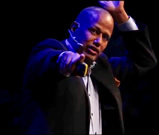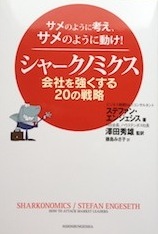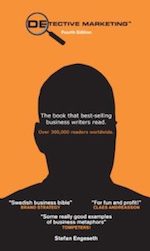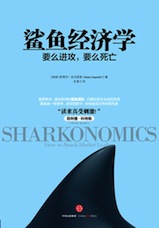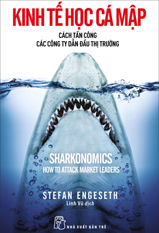
When filming a Sony commercial they did throw out 250.000 multi-coloured ‘superballs’ bouncing down the streets of San Francisco (film clip). Why not let the balls be captured by 250.000 consumers/Sony fans? Then they could connect every ball with an offer to buy a new color full screen that they are promoting. This idea would build buzz and storytelling. Every consumer then would get a story to tell about the product they did capture.
It should also be really cool if the consumers captured the balls live in the film and got a new Sony screen for free (then the balls would build PR globally, that would paid for the cost of the 250.000 screens by building increasing the selling volume).
Should you try to capture the balls, and be a part of the event?
Do you know that every paper you print has a
secret tracking cod? This tracking mechanism is the Secret Service version of “barcode consumers” embedded in their printouts.
Why does not Xerox Printers instead print out heart at Valentines Day?
Printers all look more or less the same and have more or less the same features. I think you could capture major market shares by making those grey boxes more personal. Why doesn’t Xerox talk to consumers and find out what they really want. Make a printer with some human values built in to make it more than just the last link in the consumption chain. A printer that automatically printed special occasion cards on the right date – a sort of ink filled alarm clock of love that could print out heart at days like Valentines Day? To make these ideas meaningful you would need a lot of input from customers.
Then consumers can send the printed hearts and spread love to Secret Service! Consumers can if they like put barcode on them self!
It is only when evil kisses good that a new world can be created. Evil contains power and know-how. If every bullet fired in the former Yugoslavia had been a seed, the region would have been a rainforest to stroll in, instead of a mass grave to cry over.
Evil vs. Good is in good balanced at Be Someone.
“In my marriage, my wife’s happiness is an end in itself, not merely a means to my own happiness; love leads me to put my wife’s happiness first, but in doing so I also make myself happier. Similarly, the most successful businesses put the customer first, ahead of the investors. In the profit-centered business, customer happiness is merely a means to an end: maximizing profits. In the customer-centered business, customer happiness is an end in itself, and will be pursued with greater interest, passion, and empathy than the profit-centered business is capable of.”
CEO, John Mackey, Whole Foods
About his open door / blog.

In future it will be possible to move ships across the oceans by using the wind. The company behind this dragon innovation is SkySails (film clip). Boats could save 50% fuel by using the wind.
How much would big heavy companies save, if they use the “consumer dragon” (consumer power)?

Many CEO I meet tells me that they stay costumer focusing, by putting their head on the rails.
That is a good think to do, but what if the consumer trains is “consumer power” and it’s only a 50% chance that you are looking in the right direction (the blind spot is big when you are far away from your costumers).
Is consumer focus doing “train spotting” ore is it to be ONE so you can be on the same train as your consumers?
Update Oct 27:
Today the train goes faster and more silence than ever before. A good point by Jörgen Wahl (how travel on trains a lot).
More and more, customers around a company are organizing themselves in such a way that the company is no longer necessary. Let’s take a hypothetical case: buying a car. A car is like milk: it can be produced just about anywhere. The difference between different makes of cars is the degree to which they are refined. One approach for consumer power is to manufacture would be to make your own car using a website. Picture a manufacturer that gets his design from consumers and his parts from sub-contractors. When the customers meet and drive away from the factory, they haven’t just bought a new car, they’ve also created a new community. With no advertising, you have created a no-brand car with 2 million owners.
Companies must realize that the customer truly is king when many customers converge at the same place on the Internet. Instead of engaging in “brand wars”, companies should involve the customer in their daily business. Companies that act cynically, will discover that the wrath of the king – the consumer. Their brand can easily become a symbol, an anti-brand. In that gap between anti-brands and consumer power are billions of dollars waiting for companies with the right approach.
For the organised customer, the company is no longer essential. Even more important, costumers won’t pay extra for a fake brand.
If this sounds far-fetched, compare it to Dell Computers. At Dell, the computer is built after the order and is delivered directly to the customer. This whole process can, theoretically, be done by the customer himself, only better and with a more personal touch.
Brands are becoming increasingly global and anonymous along with their products. SAAB has melted into GM, Volvo into Ford and Volkswagen has photocopied itself into Skoda and Seat. The products are becoming generic as they lose touch with their identities and origins. Quality is no longer as strong of an argument as the difference between brands shrinks. The copy can actually be better that the original since the savings in product development can be put back in the form of extra features. This defeats the whole purpose of brands – brands were originally created to protect the consumer and the manufacturer from bad originals.
Today Audi is lunching its ONE TV-channel. This is a great possibility for the to create a deeper relationship with their consumers “buy an Audi online in our show.”
It is also a way for them to create a brand mirror, so consumers can see them self and in the brand.
But how is it that drives the brand is it the consumers ore Audi?
The jeans market is continues to grow with even more styles and colors. When I talk with the sales people in clothing stores they say that the variety of jeans is directly related to consumer demand.
Years ago, Levi’s made jeans so popular that they even made the cover of a Bruce Springsteen album. But today the product is more ‘undercover’ than ‘on the’ cover.
There are so many jeans on the market today – a challenge that great advertising can not meet alone. Companies who produce jeans are faced with the task of making their jeans stick out. Here is ONE idea of how they can work with consumers:
Why not offer jeans’ consumers a sewing machine and some paint in the stores?
Why haven’t the producers of the sewing machine and cloth paint colors tapped into the jeans trend? Consumers of today want to be individuals and not have the same pair of jeans as others have – meaning the market is open to colorfulness and personification.
Levis could tap into the individual trend by designing their ONE version of a sewing machine which doesn’t look like it belonged to someone’s grandmother. This new machine could not only sew but also add paint colors. It could be connected to their site and MTV for new patterns (you see a music video and it simultaneously produces the jeans in the video.)
When you upload your own jeans design to MTV, maybe the next time they show the same music video, Bono in U2 could wear them. This added-value would increase their bottom line and give them a direct connection with their consumers. It would also bring about a competition where they could find talented, new designers when they upload their creation.
To inspire new patterns, this new sewing machine could also be connected to maps at Google, so you can use your ONE street map as a jeans design (then you could find your way home). What map would you use on your jeans as a design?
Is there a market for daily messages to put on the jeans like, “I’m single today and my mobile number is this 0771-54 45 48” or “I feel like dancing today with you” and so on. How would your jeans look if you became the designer? Why not start to create your ONE collection of jeans today?
When consumers start doing parts of products by themselves, would that fit into Levis ethical image? How can “do-it-yourself” be a trend to balance the feeling of guilt that “Made in poor country” gives consumers? Which other products will tap in to this trend?
When the customer sees himself in the company by participating in defining a service, a product or personnel, the conditions for ONE have been laid down. Participation is based on a genuine interest for the customer, not empty corporate promises.

